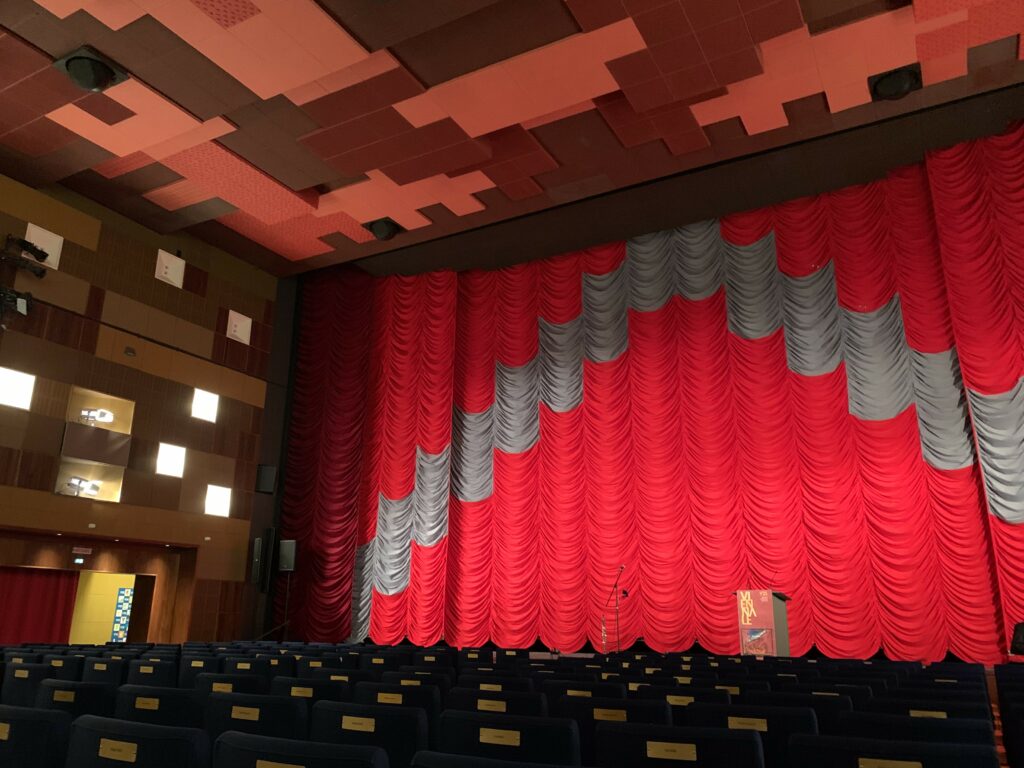The charm of the Viennale is tied, in no small part, to the venues it uses for its screenings.
Every year, at the end of October, Vienna becomes a haven for cinephiles thanks to the Viennale, whose program comprises the hottest titles from the international festival circuit as well as curated retrospectives devoted to individual filmmakers, genres, countries or movements. Whether it’s the latest Yorgos Lanthimos extravaganza or a silent Jean Epstein film with live music, viewers flock to virtually every single screening, leaving very few seats unoccupied.
Besides the rock-solid quality of the programming, a major ingredient of the Viennale’s charm is the choice of venues used for the event. One in particular holds a special place in this writer’s heart: the Gartenbaukino, which houses the opening and closing ceremonies as well as the buzziest items in the Features strand. The building’s slogan is “Cinema from the world. Since 1960,” and throughout the year it caters to a wide range of tastes with a carefully selected line-up of new releases, retrospectives, and anniversary screenings (Before Sunrise, famously shot in Vienna and celebrating its 30th birthday in 2025, was one of the hotter tickets during the summer).
 The cinema’s layout and décor (see photo) give it a pleasantly old-school feel, which is why I usually make an effort to find the time to attend a couple of screenings in that venue, even – or perhaps especially – if it’s something I’ve seen before (an inevitable byproduct of the Viennale having a limited amount of world premieres). And it proved to be particularly significant for three of the films I (re)watched at this year’s edition of the festival: Richard Linklater’s Nouvelle Vague, Alessio Rigo de Righi and Matteo Zoppis’ Heads or Tails? (Testa o croce?), and Joachim Trier’s Sentimental Value (Affeksjonsverdi).
The cinema’s layout and décor (see photo) give it a pleasantly old-school feel, which is why I usually make an effort to find the time to attend a couple of screenings in that venue, even – or perhaps especially – if it’s something I’ve seen before (an inevitable byproduct of the Viennale having a limited amount of world premieres). And it proved to be particularly significant for three of the films I (re)watched at this year’s edition of the festival: Richard Linklater’s Nouvelle Vague, Alessio Rigo de Righi and Matteo Zoppis’ Heads or Tails? (Testa o croce?), and Joachim Trier’s Sentimental Value (Affeksjonsverdi).
All three had significantly affected me when I first saw them in Cannes, and I was looking forward to seeing them again with a more varied audience (as Cannes, contrary to popular belief, does not really have screenings for non-industry people, particularly when it comes to the Official Selection). Watching them inside the Gartenbaukino was powerful not just because the crowds in attendance were really invested in what was unfolding on the screen (especially in Sentimental Value, which has a major emotional component), but also because the context of these screenings highlighted the grand common thread across all three titles: they are, in one way or another, films about cinema.
Nouvelle Vague is, of course, about the making of Jean-Luc Godard’s Breathless (À bout de souffle), a breezy and highly amusing retelling of an idiosyncratic shoot that redefined the global cinematic landscape. Sentimental Value, a father-daughter drama set in the world of the arts (he’s a somewhat washed-up film director, she’s an acclaimed stage actress), serves as a clever metaphor for Nordic co-productions: a Swedish filmmaker putting together a Norwegian-language project, with a Danish main producer, a trifecta that feeds the common myth of perfect mutual intelligibility between all Scandinavian people.
Heads or Tails? is less explicitly rooted in the film-within-a-film mindset, but under the (relatively) straightforward surface it’s an anarchic love letter to various eras and modes of the Western genre: the entire premise puts its own spin on the famous “print the legend” maxim popularized by John Ford, embracing it one minute and gleefully repudiating it the next; and the nominal villain of the piece is played by Gianni Garko, who thus gets to appear in a very different kind of Italian Western after previously rising to fame as the character Sartana between 1968 and 1970. And watching it all happen again after the Gartenbaukino curtain rose felt truly magical, like actually being lifted inside a bygone era. Contrary to online belief, cinema is not dead. And neither is the cinema.
Max Borg
© FIPRESCI 2025
